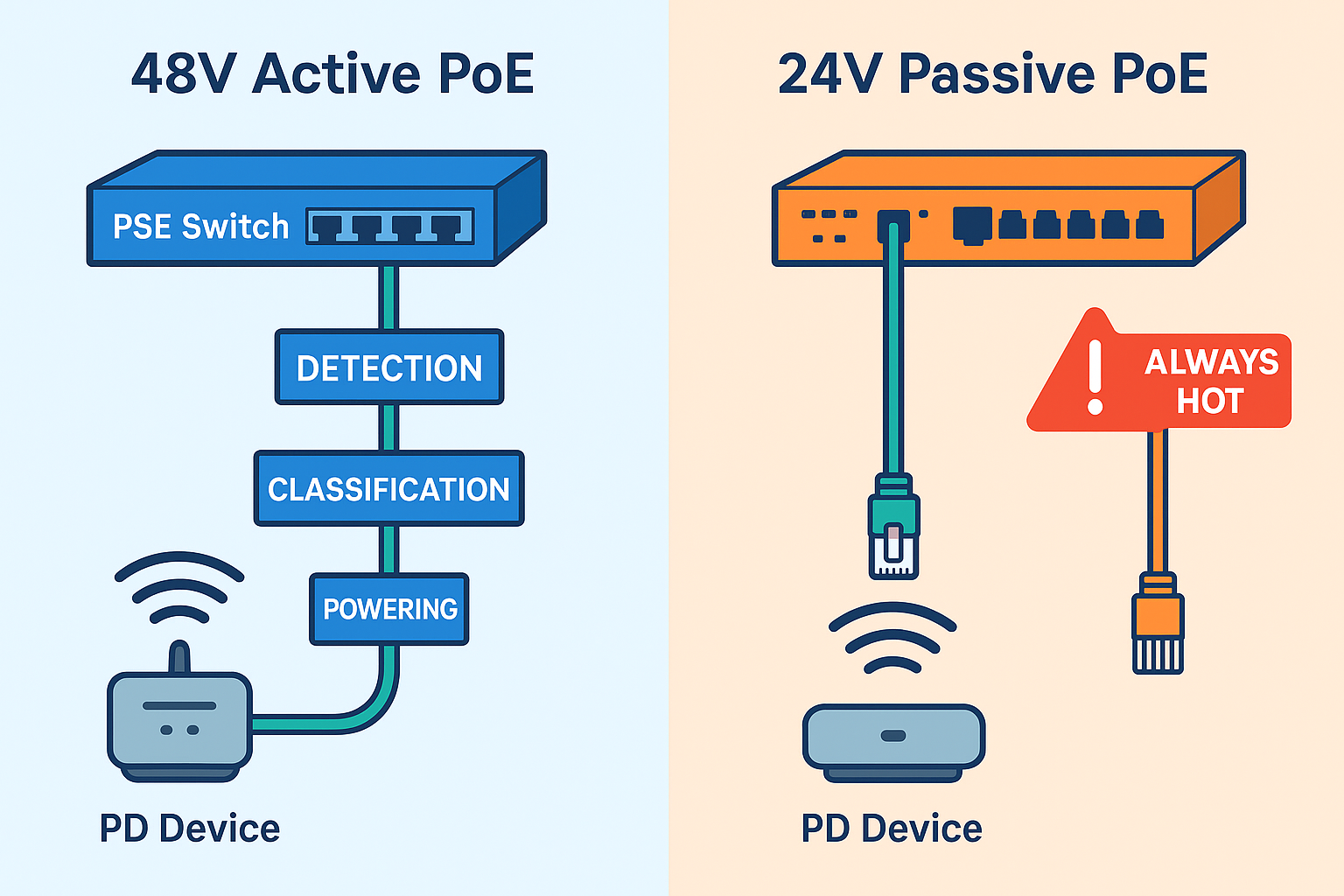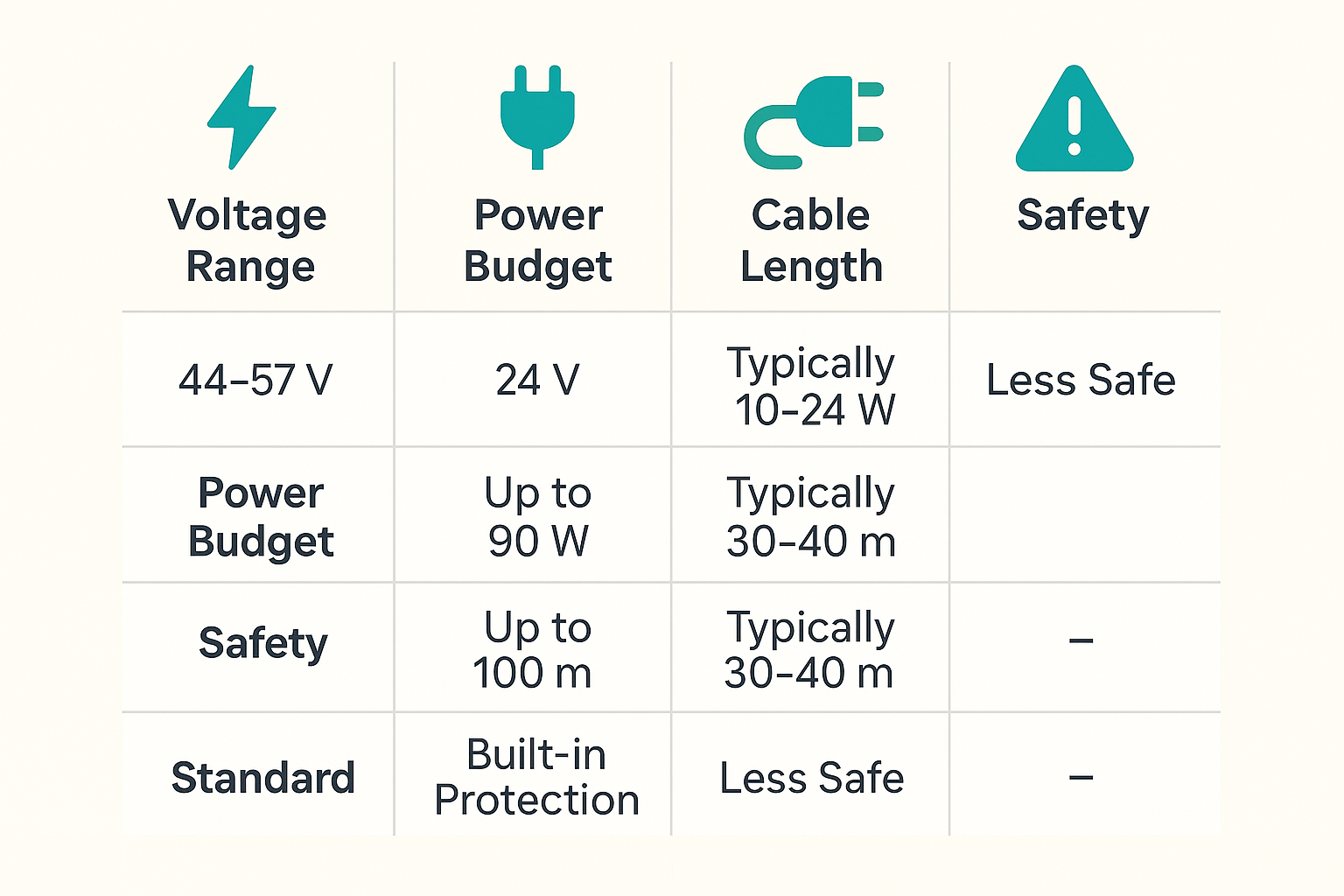Your cart
There are no more items in your cart
48 V Active PoE vs 24 V Passive PoE — Complete Technical Guide
Updated 2 June 2025 • Network Engineering Team
1 · Why Compare These Two?
Most enterprise networks rely on 48 V IEEE 802.3-af/at/bt PoE for its safety and interoperability. Thousands of legacy devices, however, still need 24 V passive PoE. Understanding the gap prevents accidental damage and costly downtime.
2 · Fast Timeline
- 2003 — 802.3-af: 15 W, handshake & classification.
- 2009 — 802.3-at (PoE+): 30 W.
- 2018 — 802.3-bt (PoE++): 60 – 100 W on all four pairs.
- 2004–2015 — WISP era: 24 V passive popular on solar-powered tower radios.
3 · Electrical Head-to-Head

| Parameter | 48 V Active PoE (802.3-af/at/bt) | 24 V Passive PoE |
|---|---|---|
| Voltage Range | 44 – 57 V (nominal 48 V) | Fixed ≈ 24 V |
| Negotiation & Safety | 25 kΩ signature, class pulses, LLDP/CDP | None — power is always present |
| Power Budget | 15 W (af), 30 W (at), 60 – 100 W (bt) | ≈ 24 W typical (1 A) |
| Cable Reach | Up to 100 m Cat5e | Practical 30 – 60 m before brown-out |
| Inter-Vendor Support | Open IEEE standard | Vendor-specific |
Ohm’s Law: Doubling voltage halves current for the same watt-age, so 48 V travels farther with lower losses.
4 · Why 24 V Ever Made Sense
Early WISP installers ran radios straight off 24 V battery banks. Skipping DC-DC converters saved cost, heat and points of failure.
- Lower BoM: no detection ICs or hot-swap circuitry.
- Efficiency: less energy wasted stepping down to MCU rails.
- Ecosystem lock-in: devices required matching injectors.
5 · Deployment Tips

- Label every 24 V port — it will energise anything plugged in.
- Inline converters (e.g. Ubiquiti INS-3AF-I-G) let 48 V switches feed legacy 24 V gear.
- Most new switches & APs now ship 48 V-only or dual-mode for easier migration.
6 · Decision Matrix
| Choose 48 V Active PoE | Keep 24 V Passive PoE | |
|---|---|---|
| New Installations | Always — future-proof & safe | Not recommended |
| Outdoor Radios | Modern 802.3-at/bt hardware | Legacy NanoStation M5, CPE510 etc. |
| Cable Runs > 60 m | Yes | Voltage drop becomes critical |
| Multi-vendor Networks | Yes | No |
7 · Bottom Line
IEEE-compliant 48 V PoE delivers longer reach, higher power and built-in safety. Retain 24 V passive only where hardware replacement is impractical; standardise on 802.3-af/at/bt everywhere else.

